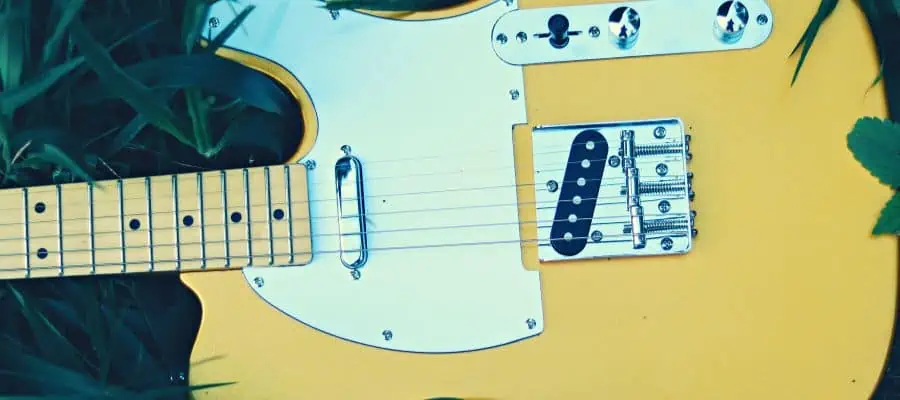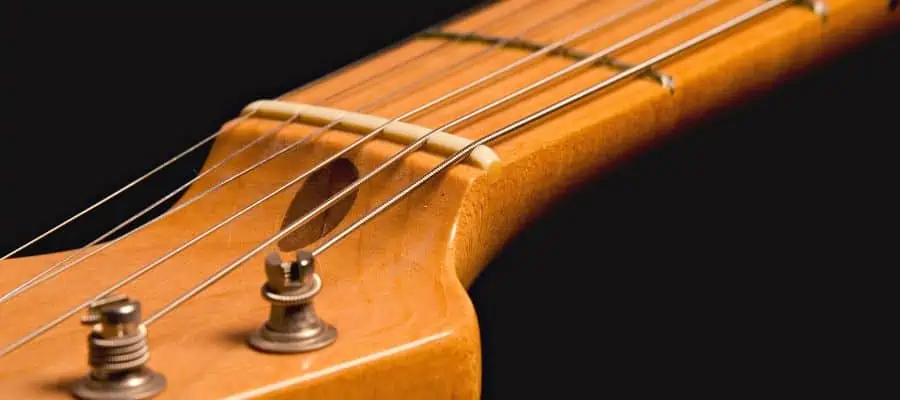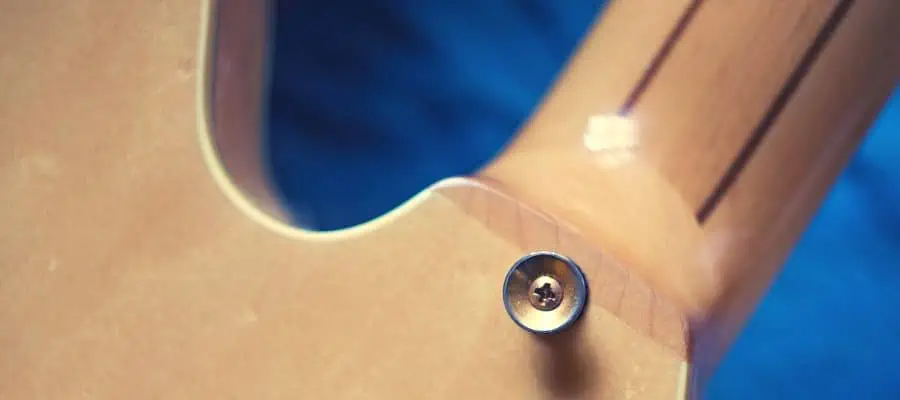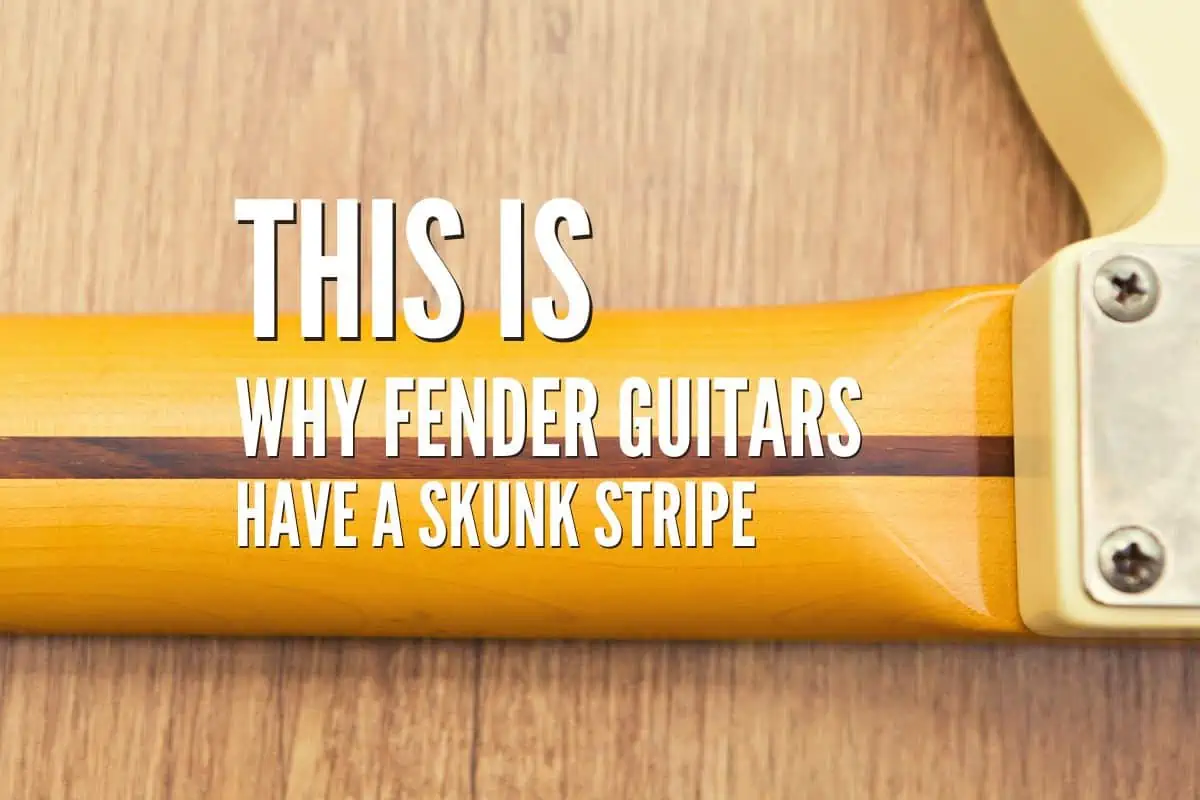If you have ever owned or played a Fender guitar, you might have noticed a brown stripe running down the back of the neck. This is the so-called “skunk stripe,” which is a unique part of the anatomy of a Fender guitar.
The skunk stripe is a thin line, typically made of walnut, found on the backside of most Fender guitars. Fender guitars typically have one-piece maple necks that need a channel routed out for truss rod placement. This walnut line fills the routed-out channel.
As most Fender guitars have maple necks, the walnut line contrasts with its brown color, leading to the name “the skunk stripe.”
History of the Skunk Stripe

The story of the skunk stripes dates back to the early 1950s when Fender and some other brands started using different materials on the rear neck channels. While there were other guitar makers using different materials to fill out the channel routed for the truss rod, the skunk stripe name refers to the Fender guitars, as Fender always used walnut for the channel, creating the contrast between the maple neck and the darker color of the walnut.
Until 1958, the traditional Fender design featured a single-piece maple neck and fingerboard with a walnut rear neck channel, besides some exceptions like the Esquire model without truss rods. After 1958, Fender introduced the rosewood fingerboards with the Jazzmaster model. A year later this became a Fender standard and lifted the necessity of the skunk striped as the truss rod placement now could be made from the fretboard side. And after, with the rosewood fingerboards, the channel could be concealed.
In the 1960s, most Fender guitars had the rosewood fingerboard and no skunk stripes. Also, the brand offered two-piece maple neck models, which did not have the skunk stripe either.
In the last year of the 1960s, Fender returned to one-piece maple neck models, which meant the return of the skunk stripes.
The game totally changed in 1971, which is the point where the bullet truss rod system was introduced for Stratocasters by Fender. This change moved the truss rod adjustment mechanism to the headstock. And the bullet system needed to be routed again from the back of the neck. So all bullet models, either with rosewood or maple fingerboards, had the skunk stripe as the routing process was always done from the back.
After a while, around the last years of the 1970s, the skunk stripe and the bullet system became a Fender standard, and all the models independent from the fretboard material had the walnut channel on the back of the neck.
Today, almost all Fender models have the skunk stripe, except some remakes of vintage models such as the 1960s Vintage Series 1960s.
What is a Truss Rod?

A truss rod is a reinforcement bar placed in the neck. It goes all the way or mostly down the neck and prevents the neck from warping by stiffening it. Later, truss rods became adjustable, helping players adjust the height of the action by changing the curvature of the neck.
Today, many guitars use carbon fiber, steel, or graphite instead of metal to decrease the weight and make the guitar less susceptible to external changes like temperature and humidity.
Are There Any Advantages of Skunk Stripes?

While skunk stripes do not provide any performance benefit on the sound or playability of an instrument, a guitar with a rear channel strip has some advantages over one with none. The main advantage is the repair procedure if the truss rod ever gets damaged.
If the truss rod placement is done from the fretboard side, the repair of the truss rod requires a hard repair process, where the neck has to be removed. Or the guitar needs a total neck replacement.
But, if the truss rod is installed from the back of the net, which is the case with guitars with skunk stripes, the repair procedure is much easier. With the careful application of the heat, the skunk stripe can be removed to change the truss rod.
Are There Other Guitar Brands Using The Skunk Stripes?

Many guitar manufacturers got inspired by the skunk stripe and used this approach on their models. Ibanez, for example, uses more exotic woods like bubinga on their Prestige models.
The skunk stripe approach became a standard in the guitar-making process, so many guitars today do have a skunk stripe. However, unlike the Fender approach, they may use woods other than walnut.
Conclusion
To summarize, a skunk stripe is the darker line on the back side of the net, which is the cover of the routing channel of the truss rod. If you ever see a guitar with a skunk stripe, you can easily come to the conclusion that the truss rod installment was done from the back side of the neck.
The darker stripe on the maple neck is the origin of the name “skunk stripe,” as it creates a great contrast on the backside of the neck.
The skunk stripe approach is highly associated with Fender guitars as Fender was the first brand to standardize this approach, although other brands also had some models with skunk stripes before Fender ever did.
The skunk stripes do not affect playability or sound but make truss rod repairment processes much easier compared to models that have the installment done from the fretboard side.
If you found this article useful, you may want to save this pin below to your Guitar board.

Recent Posts
Some guitarists insist on buying an expensive amplifier with their electric guitar. They assume that this is a must for every type of guitarist out there. However, in some situations, this isn’t...
Top 50 Free Realistic Guitar VST Plugins With Sound Examples
As technology has rapidly advanced in the recent decade, computers are stealing more and more roles from physical musical instruments and accessories. Nowadays, you do not need expensive amps,...

